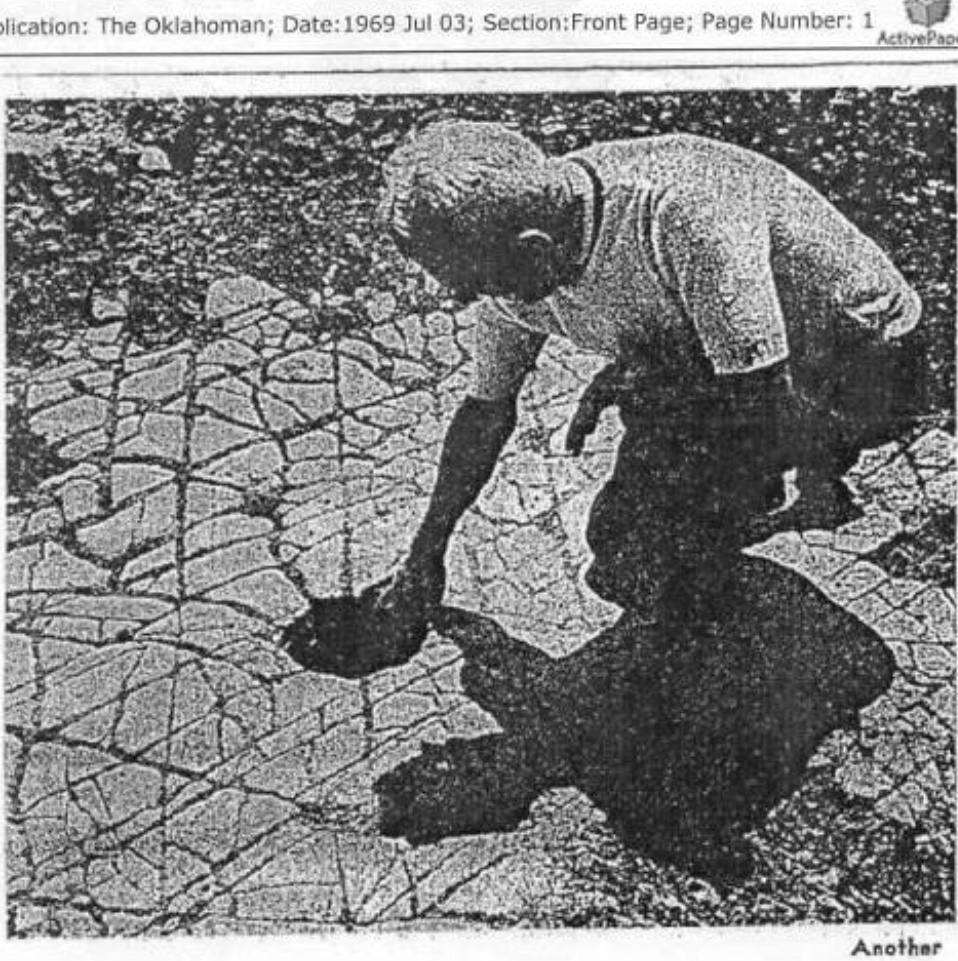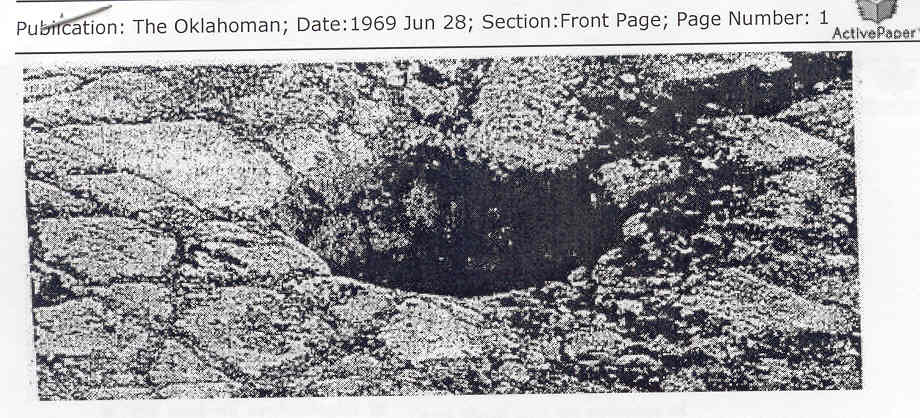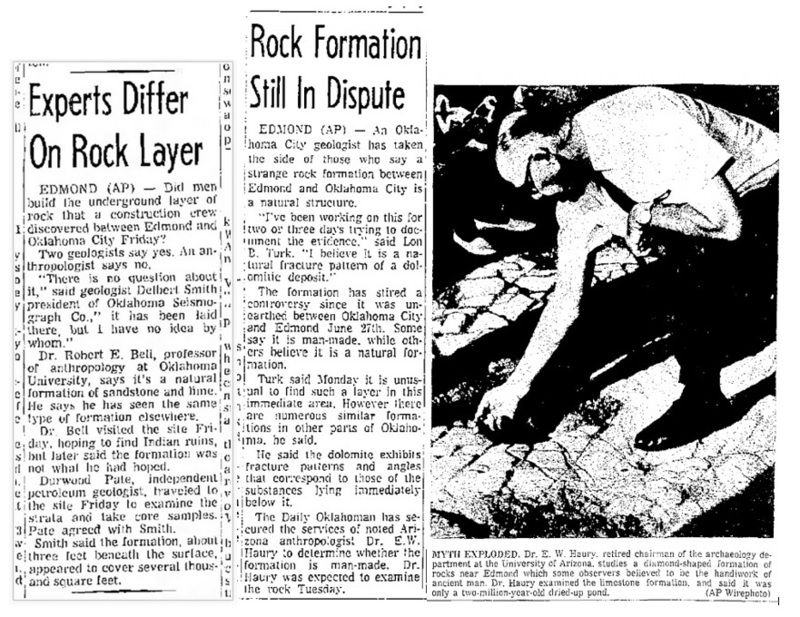In 1969, construction workers in Oklahoma, USA, discovered a strange structure that appeared to be man-made and, according to many authors, had the potential to rewrite not only the history of the United States but also the history of the entire world.

This structure, which resembles a stone mosaic floor, was discovered in a layer that specialists believe dates back 200 thousand years. At the same time, it is widely assumed that the earliest humans arrived in North America only 22-19 thousand years ago.
Shortly after its discovery, an article about this remarkable find was published in the newspaper “The Oklahoman,” sparking intense controversy among specialists and daily readers. The story also included three black and white photographs of this “mosaic,” which are still the only surviving images of this object.
Here’s what was written in the news article:
“On June 27, 1969, workers cutting through a rock located on the Broadway Extension of 122nd Street, between Edmond and Oklahoma City, stumbled upon a find that caused much controversy among experts. …
I’m sure it was human-made because the stones were arranged in perfect sets of parallel lines that intersected to form a diamond shape, all pointing east,” said Durwood Pate, an Oklahoma City geologist who studied the matter and place meticulously.
We also found the hole for the pole (pillar) which is perfectly flat. The top of the rocks is very smooth, and if you pick up one of them, you find something that indicates surface wear. Everything is too well positioned to be a natural formation.”

Dr. Robert Bell, an archaeologist at the University of Oklahoma, disagreed, claiming that the discovery was a natural formation. Dr. Bell stated that he found no sign of the processing agent. Pate, on the other hand, discovered something like grout — a dense fluid used to fill gaps in building structures — between each stone.
The structure, discovered approximately 90 centimeters below the earth’s surface, looks to encompass many thousand square feet, according to Delbert Smith, geologist, and president of the Oklahoma Seismograph Company, and former president of the Oklahoma City Geophysical Society. “There’s no doubt about it. It was clearly put there, but I have no idea who could have done it,” he told the journalist.
Geologysts Delbert Smith and Durwood Pate traveled to the site to analyze the formation and collect samples, according to the newspaper. “I am convinced that this is not a natural earthly formation, but something created by human hands,” Smith said later.
Two days later, on June 29, 1969, another news article about this find appeared in the newspaper “Tulsa World”. There Delbert Smith’s words were given more precisely and the dating of the object sounded for the first time:
“There’s no doubt about that. It was specially installed by someone, but I have no idea who did it.”
“Another facet of the mystery is related to the dating. There are different opinions regarding the geology involved, but the most accurate estimates of the age of these tiles are 200 thousand years.”

The investigation continued. The finding of a second hole in the “mosaic” was reported in The Oklahoman on July 1, 1969. According to the results of the measurements, there’s a distance of five meters between the two holes. According to Pate, the rock used to create the mosaic is a blend of Permian limestone and quartz grains.
On July 3, The Oklahoman newspaper continued its coverage of the discovery, pointing out that according to reports from archaeologists, an “ancient stone hammer” was also found at the site.
“The mystery of the dolomite limestone formation discovered between Oklahoma City and Edmond was exacerbated Wednesday by the discovery of a hammer-like object at the site.”
Geologists who paid attention to the unusual formation found it difficult to explain the origin of the formation or artifact. John M. Ware, an Oklahoma City geologist, said: “It just can’t be explained in terms of geology – we need an archaeologist to give the final opinion. However, its age and origins may remain a mystery if the archaeologist is not able to convince him to take on the project soon.”
“Within 20 days, the builders will continue their work on the excavation of the area in order to begin the construction of a food warehouse. Another intriguing feature of the rock is that it contains marine sediments, indicating that it was once an ocean floor.”
Pate added that “the 100-by-60-foot formation is fast becoming a tourist attraction.”
“People flock there and rip off chunks of stone. We must save it until something is done to determine its origin.”
Unfortunately, nearly little further information about this bizarre discovery was reported in Oklahoma media after that, and what actually happened to it is unclear to this day.




